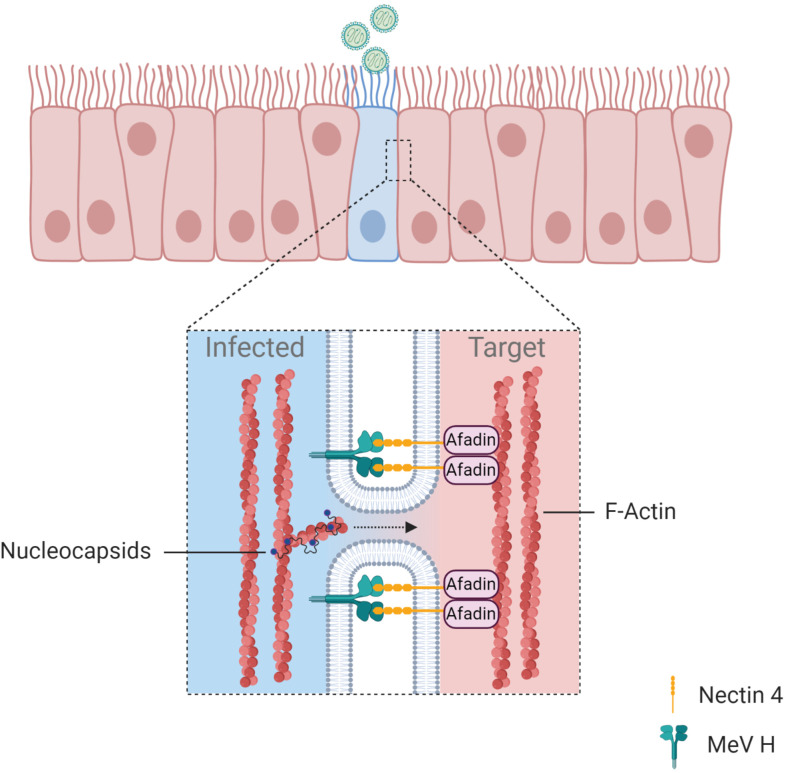Fig. 4.
Formation of intercellular membrane pores. Infection of polarized epithelial cells by measles virus results in the opening of membrane pores between adjacent cells. Intercellular pores are stabilized by interactions between the viral glycoprotein H and the cellular receptor Nectin 4, which is anchored to the cell cytoskeleton through the Afadin protein. It has been suggested that physical constraints due to the presence of the circumapical F-actin ring thwart expansion of the intercellular pores, in contrast to what is observed during syncytia formation. However, the pore has a size that permits direct spread of ribonucleoprotein complexes that can initiate infection in the adjacent cell. Blue dots represent polymerase complexes bound to viral RNA.

